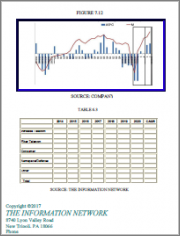
|
시장보고서
상품코드
1663007
갈륨 비소 태양전지 시장 규모, 점유율, 성장 분석 : 유형별, 용도별, 최종사용자별, 지역별 - 산업 예측(2025-2032년)Gallium Arsenide Solar Cells Market Size, Share, and Growth Analysis, By Type, By Application, By End-User, By Region - Industry Forecast 2025-2032 |
||||||
갈륨 비소(GaAs) 태양전지 시장 규모는 2023년에 163억 8,000만 달러로 평가되며, 2024년 177억 7,000만 달러에서 2032년에는 341억 3,000만 달러로 성장하며, 예측 기간(2025-2032년)의 CAGR은 8.5%로 성장할 전망입니다.
갈륨비소(GaAs) 태양전지 시장은 기존 실리콘 태양전지에 비해 뛰어난 효율과 생산 비용 절감으로 인해 큰 성장이 예상되며, GaAs 태양전지는 주로 항공우주, 군, 틈새 가전 시장과 같은 고성능 분야에서 활용되고 있습니다. 이 분야의 잠재력을 보여주기 위해 Alta Devices는 2021년 1월 미국 공군으로부터 우주용 경량 플렉서블 태양전지 개발을 위해 710만 달러 규모의 계약을 체결했습니다. 또한 Azure Space Solar Power는 2021년 8월에 30.3%의 전례 없는 효율을 달성한 삼중 접합 GaAs 전지를 개발하여 기록을 경신했습니다. 이러한 발전은 고효율 및 다중접합 태양전지 용도에 가장 적합한 기판으로서 GaAs의 중요성을 강조하며 시장 확대를 더욱 촉진하고 있습니다.
목차
서론
- 조사의 목적
- 조사 범위
- 정의
조사 방법
- 정보 조달
- 2차와 1차 데이터 방법
- 시장 규모 예측
- 시장의 전제조건과 제한
개요
- 세계 시장 전망
- 공급과 수요 동향 분석
- 부문별 기회 분석
시장 역학과 전망
- 시장 개요
- 시장 규모
- 시장 역학
- 촉진요인과 기회
- 억제요인과 과제
- Porter의 산업 분석
주요 시장 인사이트
- 주요 성공 요인
- 경쟁의 정도
- 주요 투자 기회
- 시장 에코시스템
- 시장의 매력 지수(2024년)
- PESTEL 분석
- 거시경제 지표
- 밸류체인 분석
- 가격 분석
- 사례 연구
- 기술의 진보
- 규제 상황
- 특허 분석
세계의 갈륨 비소(GaAs) 태양전지 시장 규모 : 유형별
- 시장 개요
- 단접합 GaAs 태양전지
- 다중접합 GaAs 태양전지
갈륨 비소(GaAs) 태양전지 세계 시장 규모 : 용도별
- 시장 개요
- 우주 애플리케이션
- 지상 애플리케이션
갈륨 비소(GaAs) 태양전지 세계 시장 규모 : 최종사용자별
- 시장 개요
- 주택용
- 상업용
- 산업용
- 유틸리티
세계의 갈륨 비소(GaAs) 태양전지 시장 규모
- 북미
- 미국
- 캐나다
- 유럽
- 독일
- 스페인
- 프랑스
- 영국
- 이탈리아
- 기타 유럽 지역
- 아시아태평양
- 중국
- 인도
- 일본
- 한국
- 기타 아시아태평양
- 라틴아메리카
- 브라질
- 기타 라틴아메리카 지역
- 중동 및 아프리카
- GCC 국가
- 남아프리카공화국
- 기타 중동 및 아프리카
경쟁 정보
- 상위 5사의 비교
- 주요 기업의 시장 포지셔닝(2024년)
- 주요 시장 기업이 채택한 전략
- 최근 시장 동향
- 기업의 시장 점유율 분석(2024년)
- 주요 기업의 기업 개요
- 기업의 상세
- 제품 포트폴리오 분석
- 기업의 부문별 점유율 분석
- 매출의 전년대비 비교(2022-2024)
주요 기업 개요
- AIXTRON SE(Germany)
- Sumitomo Electric Industries, Ltd.(Japan)
- Hanergy Thin Film Power Group(China)
- Solar Junction(USA)
- Saint-Gobain Solar(France)
- JDS Uniphase Corporation(USA)
- Space Photovoltaic Research Center(Japan)
- NREL(USA)
- Sharp Corporation(Japan)
- Boeing Spectrolab(USA)
- MicroLink Devices(USA)
- IQE plc(UK)
- Freiberger Compound Materials GmbH(Germany)
- Xiamen Powerway Advanced Material Co., Ltd.(China)
결론과 제안
KSA 25.03.27Gallium Arsenide (GaAs) Solar Cells Market size was valued at USD 16.38 billion in 2023 and is poised to grow from USD 17.77 billion in 2024 to USD 34.13 billion by 2032, growing at a CAGR of 8.5% during the forecast period (2025-2032).
The Gallium Arsenide (GaAs) solar cells market is poised for substantial growth, fueled by their superior efficiency and decreasing production costs compared to conventional silicon solar cells. GaAs cells are predominantly utilized in high-performance sectors such as aerospace, military, and niche consumer electronics markets. Highlighting the sector's potential, Alta Devices secured a $7.1 million contract from the US Air Force in January 2021 to create a lightweight, flexible solar cell for space use. Additionally, Azur Space Solar Power broke records in August 2021 by developing a triple-junction GaAs cell that achieved an unprecedented efficiency of 30.3%. These advancements underscore GaAs's significance as an optimal substrate for high-efficiency and multijunction solar cell applications, further driving market expansion.
Top-down and bottom-up approaches were used to estimate and validate the size of the Gallium Arsenide (Gaas) Solar Cells market and to estimate the size of various other dependent submarkets. The research methodology used to estimate the market size includes the following details: The key players in the market were identified through secondary research, and their market shares in the respective regions were determined through primary and secondary research. This entire procedure includes the study of the annual and financial reports of the top market players and extensive interviews for key insights from industry leaders such as CEOs, VPs, directors, and marketing executives. All percentage shares split, and breakdowns were determined using secondary sources and verified through Primary sources. All possible parameters that affect the markets covered in this research study have been accounted for, viewed in extensive detail, verified through primary research, and analyzed to get the final quantitative and qualitative data.
Gallium Arsenide (Gaas) Solar Cells Market Segments Analysis
Global Gallium Arsenide (GaAs) Solar Cells Market is segmented by Type, Application, End-User and region. Based on Type, the market is segmented into Single-Junction GaAs Solar Cells and Multi-Junction GaAs Solar Cells. Based on Application, the market is segmented into Space Applications and Terrestrial Applications. Based on End-User, the market is segmented into Residential, Commercial, Industrial and Utility. Based on region, the market is segmented into North America, Europe, Asia Pacific, Latin America and Middle East & Africa.
Driver of the Gallium Arsenide (Gaas) Solar Cells Market
The escalating awareness of the detrimental impacts of non-renewable energy sources on the environment has significantly spurred the demand for renewable energy solutions, particularly solar energy. As a result, there is a notable shift towards the utilization of Gallium Arsenide (GaAs) solar cells, which are recognized for their exceptional efficiency and reliability. This increased focus on sustainable energy alternatives not only highlights the urgent need for environmentally-friendly power generation methods but also positions GaAs solar cells as a compelling choice in the renewable energy market, catering to both commercial and residential applications seeking higher performance.
Restraints in the Gallium Arsenide (Gaas) Solar Cells Market
While GaAs solar cells are often deemed environmentally sustainable, the process of producing gallium arsenide raises significant environmental issues. Specifically, the manufacturing of these cells can lead to the release of hazardous substances, which poses potential risks to both human health and the environment. These concerns highlight the need for careful management and mitigation strategies in the production process to ensure that the environmental benefits of GaAs solar cells are not overshadowed by the ecological impacts of their manufacturing. As awareness of these issues grows, it may hinder market acceptance and hinder the expansion of GaAs solar technology.
Market Trends of the Gallium Arsenide (Gaas) Solar Cells Market
The market for Gallium Arsenide (GaAs) solar cells is witnessing a notable upward trend, driven primarily by the escalating demand in space applications, particularly for satellite communication and exploration. Renowned for their high efficiency and reliability, GaAs solar cells are becoming the preferred choice for aerospace and defense sectors, where performance under extreme conditions is crucial. As technological advancements further enhance their capabilities and reduce costs, their adoption is expected to expand beyond space applications into terrestrial markets, including concentrated solar power systems and portable electronic devices. This evolving landscape signifies a robust growth trajectory for the GaAs solar cell market.
Table of Contents
Introduction
- Objectives of the Study
- Scope of the Report
- Definitions
Research Methodology
- Information Procurement
- Secondary & Primary Data Methods
- Market Size Estimation
- Market Assumptions & Limitations
Executive Summary
- Global Market Outlook
- Supply & Demand Trend Analysis
- Segmental Opportunity Analysis
Market Dynamics & Outlook
- Market Overview
- Market Size
- Market Dynamics
- Drivers & Opportunities
- Restraints & Challenges
- Porters Analysis
- Competitive rivalry
- Threat of substitute
- Bargaining power of buyers
- Threat of new entrants
- Bargaining power of suppliers
Key Market Insights
- Key Success Factors
- Degree of Competition
- Top Investment Pockets
- Market Ecosystem
- Market Attractiveness Index, 2024
- PESTEL Analysis
- Macro-Economic Indicators
- Value Chain Analysis
- Pricing Analysis
- Case Studies
- Technology Advancement
- Regulatory Landscape
- Patent Analysis
Global Gallium Arsenide (GaAs) Solar Cells Market Size by Type & CAGR (2025-2032)
- Market Overview
- Single-Junction GaAs Solar Cells
- Multi-Junction GaAs Solar Cells
Global Gallium Arsenide (GaAs) Solar Cells Market Size by Application & CAGR (2025-2032)
- Market Overview
- Space Applications
- Terrestrial Applications
Global Gallium Arsenide (GaAs) Solar Cells Market Size by End-User & CAGR (2025-2032)
- Market Overview
- Residential
- Commercial
- Industrial
- Utility
Global Gallium Arsenide (GaAs) Solar Cells Market Size & CAGR (2025-2032)
- North America (Type, Application, End-User)
- US
- Canada
- Europe (Type, Application, End-User)
- Germany
- Spain
- France
- UK
- Italy
- Rest of Europe
- Asia Pacific (Type, Application, End-User)
- China
- India
- Japan
- South Korea
- Rest of Asia-Pacific
- Latin America (Type, Application, End-User)
- Brazil
- Rest of Latin America
- Middle East & Africa (Type, Application, End-User)
- GCC Countries
- South Africa
- Rest of Middle East & Africa
Competitive Intelligence
- Top 5 Player Comparison
- Market Positioning of Key Players, 2024
- Strategies Adopted by Key Market Players
- Recent Developments in the Market
- Company Market Share Analysis, 2024
- Company Profiles of All Key Players
- Company Details
- Product Portfolio Analysis
- Company's Segmental Share Analysis
- Revenue Y-O-Y Comparison (2022-2024)
Key Company Profiles
- AIXTRON SE (Germany)
- Company Overview
- Business Segment Overview
- Financial Updates
- Key Developments
- Sumitomo Electric Industries, Ltd. (Japan)
- Company Overview
- Business Segment Overview
- Financial Updates
- Key Developments
- Hanergy Thin Film Power Group (China)
- Company Overview
- Business Segment Overview
- Financial Updates
- Key Developments
- Solar Junction (USA)
- Company Overview
- Business Segment Overview
- Financial Updates
- Key Developments
- Saint-Gobain Solar (France)
- Company Overview
- Business Segment Overview
- Financial Updates
- Key Developments
- JDS Uniphase Corporation (USA)
- Company Overview
- Business Segment Overview
- Financial Updates
- Key Developments
- Space Photovoltaic Research Center (Japan)
- Company Overview
- Business Segment Overview
- Financial Updates
- Key Developments
- NREL (USA)
- Company Overview
- Business Segment Overview
- Financial Updates
- Key Developments
- Sharp Corporation (Japan)
- Company Overview
- Business Segment Overview
- Financial Updates
- Key Developments
- Boeing Spectrolab (USA)
- Company Overview
- Business Segment Overview
- Financial Updates
- Key Developments
- MicroLink Devices (USA)
- Company Overview
- Business Segment Overview
- Financial Updates
- Key Developments
- IQE plc (UK)
- Company Overview
- Business Segment Overview
- Financial Updates
- Key Developments
- Freiberger Compound Materials GmbH (Germany)
- Company Overview
- Business Segment Overview
- Financial Updates
- Key Developments
- Xiamen Powerway Advanced Material Co., Ltd. (China)
- Company Overview
- Business Segment Overview
- Financial Updates
- Key Developments



















